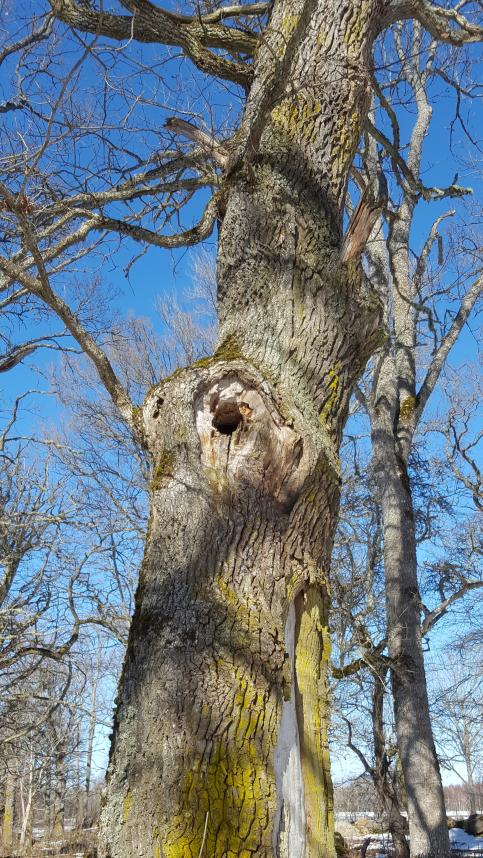Background & Aims
Background

Living trees provide a number of microhabitats, such as trunk cavities and dead wood (e.g. branches and roots), inhabited by insects and fungi. Cavities are often developed when trees are colonized by heart-rot fungi, e.g. after branches break and leaves an open wound. Hollows in trees tend to change as the tree ages and species diversity is often increasing as the cavity develops and gets bigger and more complex. Depending on the characteristics of a cavity, the inside can be dry, moist or wet which in turn change the composition of insect and fungi species. As both biotic and abiotic factors shape each cavity, no cavities are alike, hence, all cavities will host different faunas. It has been shown that some beetle species do not inhabit trees before a certain amount of wood mould (loose dead wood material) has developed.
In this study, I focused on a certain group of beetles called saproxylic beetles. This group is one of the most threatened groups of organisms and consists of beetles depending on wood (dead or dying) as well as different wood living fungi. Some of them are depending on the presence of other species of saproxylic beetles. In Sweden, 1300 species of beetles out of the total 4500 recorded, are more or less dependent on wood in different forms and of these 540 species are found to live on oaks.
The threats towards these species are both historical and contemporary. Overall, ecosystems in temperate deciduous forest areas in Europe has declined in numbers and natural ecosystems are absent in a lot of areas. A lot of species that have their larval development in old trees are nowadays threatened. Historically, lots of forests in Europe were cut down due to intensified agriculture.
Because of limited resources within conservation work, monitoring and identifying of certain habitats for these threatened species is important. What habitats are most important and what trees do we need to focus on?
Aim
The aim of this study is to investigate how the beetle fauna change during trunk cavity succession on old oaks and by doing so, enable good management strategies for conservation of oak living saproxylic beetle fauna. By collecting beetles from 83 hollow oaks with cavities of different size and shape and by measure several other tree parameters, I hope to see what changes in the studied fauna that is caused by variations in size of the cavity entrance.
Responsible for this page:
Director of undergraduate studies Biology
Last updated:
05/06/19
